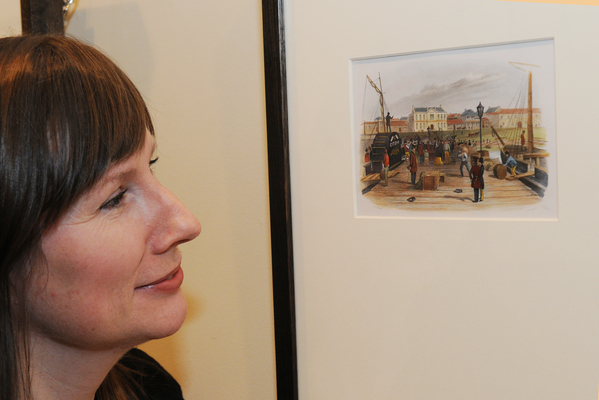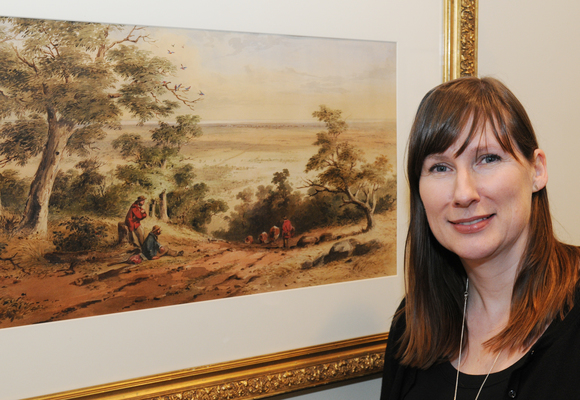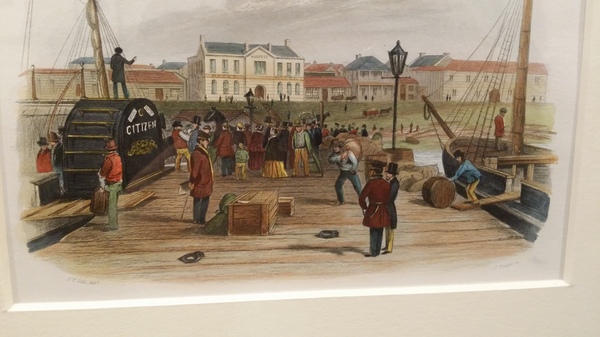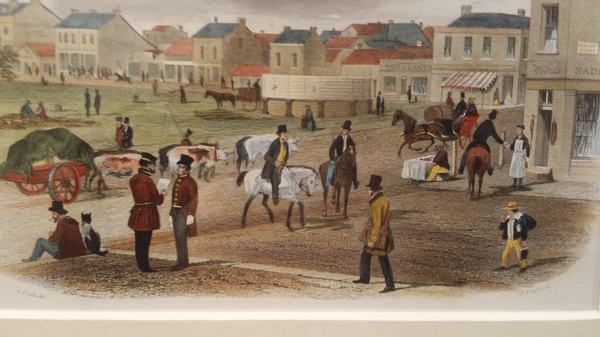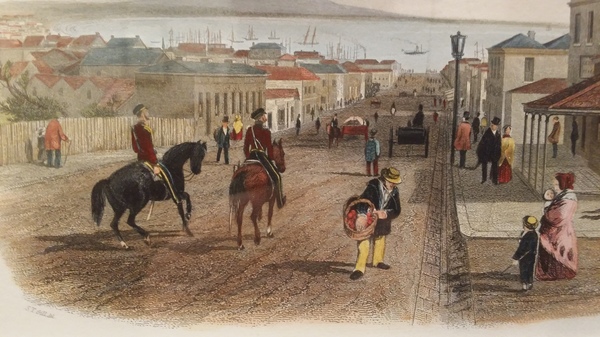By NOEL MURPHY
EARLY Geelong was a ruddy melange of terra cotta reds, light sandstone, timber tans and slate grey.
Artist Samuel Thomas Gill’s renderings of the Pivot, as the town was once called, show a surprisingly vibrant settlement on the faraway reaches of the civilised world.
Gill’s work, on show at Geelong Gallery, catalogues the early society in a virtual photographic record.
The paintings were also a canny marketing tool.
Well-dressed travellers in coats and crinolines of crimson, yellow and brown board ships in front of green slopes leading down to Corio Bay. Labourers heft bags across their shoulders while horses haul carts uphill as police and wharf officials oversee proceedings.
Kids in clever hats and suits, mothers in bonnets and pink shawls, and businessmen in top hats stroll the broad thoroughfare of Yarra St.
Busy scenes are peppered with mounted police, fruit hawkers, an old man on a walking cane with his granddaughter and a forest of ship masts in the distant bay.
The sharp eye of ST Gill misses little, often focussing on the ordinary and in the process providing a remarkable insight into the everyday life of Geelong 160 years ago.
His Market Square, for instance, is a green paddock with a handful of gnarly trees, men digging a hole, others hauling timber, a man smoking a pipe on the edge of the footpath, his dog beside him observing passing oxen, carts, horses, jinkers, a woman selling wares from a table beside the footpath.
The gallery’s display, ST Gill – Town and Country Life, is a satellite exhibition of a major retrospective exhibition, Australian Sketchbook: Colonial Life and the Art of ST Gill, at Victoria’s State Library.


